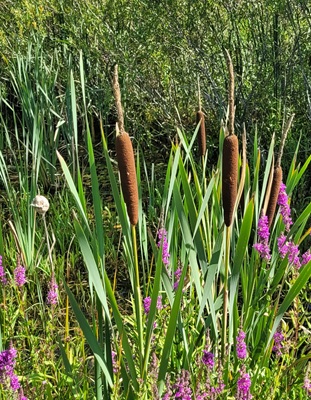Flower Properties
| Property | Value |
|---|---|
| English Name | Bullrush |
| MainColor | Black |
| PlantType | |
| Growth Type | |
| Season | |
| ImageUrl | Typha-001 |
| Photographer | DP |
| Location | |
| Human Toxicity | Non_Toxic |
Flower Details
Description
Bulrush is a tall, perennial wetland plant that can grow up to 3 metres in height. It features long, slender leaves and distinctive brown flower spikes that resemble cylindrical catkins.
Distribution
This species is commonly found in marshes, ponds, and along the edges of lakes across Europe, Asia, and North America. It thrives in shallow water and can often be seen in large stands.
Medicinal/Other Uses

✅ Historically, various parts of the plant have been used for food, weaving, and as a natural water filter. The young shoots can be consumed, and the fluffy seed heads have been used for insulation and stuffing.
Edibility

The young shoots and rhizomes of Bulrush are edible and can be eaten raw or cooked. The seeds can also be ground into flour, although they are less commonly used.
Human Toxicity
Pet Toxicity

Non Toxic to dogs and cats - ingestion of the plant is not known to cause harm.
Active Compounds
The plant contains tannins and flavonoids, which may have antioxidant properties. However, specific active compounds are not well-documented.
